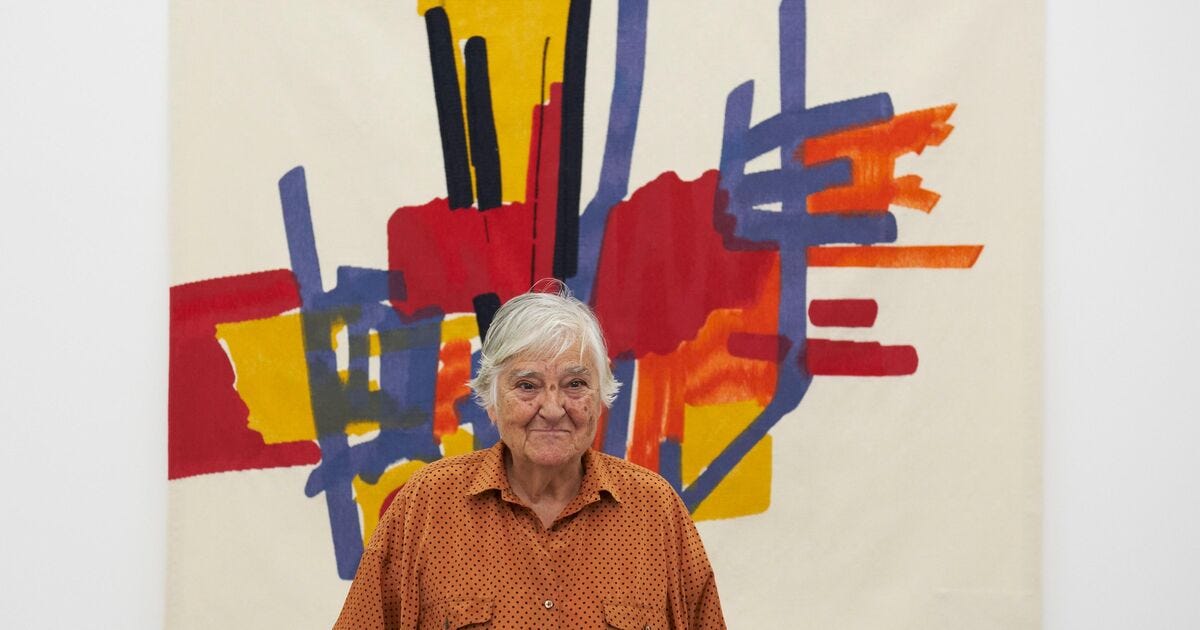The Most Gracious Mind
with Etel Adnan's untitled paintings
“There is a truth in oneself. One must make do with that, and it comes out.” —Etel Adnan in The Beauty of Light
ETEL ADNAN was Lebanese-American. She grew up in four languages: Turkish, Greek, Arabic, and colonially mandated French. After the Algerian War, when she was teaching philosophy at the University of California, Berkeley, she stopped writing in French and began to paint. Her first tool was a pallet knife, used for flat shape-making. When asked why so many of her paintings are without titles, she says: “An abstract painting is like music, which doesn’t really call for a title—we say “sonata”—and abstraction is visual music. It’s the same, it has a meaning not destined to be put into words.”
Blocks structure our collective imagination and its boundary. Color offsets these logics, makes all possible. I’m lulled by the simplicity, the organized familiarity: mountain ridge, sun, rectangle. Adnan’s outlines make it so that when seeing I can rest my head. Language stands aside, a watchful observer for the subject’s animation—not the strict aesthetic, nor necessarily the substance. Instead, how the subject turns over, then over again.
Although never a painter, I’ve thought in color, meditated on the feeling of my condition in hues, sought the sureness of lines, traced objects into notebooks without error which made me feel proud. This pathway, known in yogic principles as the sushumna nadi, is fixed, oriented at center. In practice, the channel fills with imagined color, affectual texture, double-helixing toward the mind. In essence, sushumna is without substance. It’s only once attention and breath move toward it that prana instigates a reaction. This reaction is named vairagya, or: no color. Now transparent, the subject adopts what they encounter. Devoid of intellectualization results the “joyful” or “most gracious mind.”
Keep reading with a 7-day free trial
Subscribe to Intertext to keep reading this post and get 7 days of free access to the full post archives.




